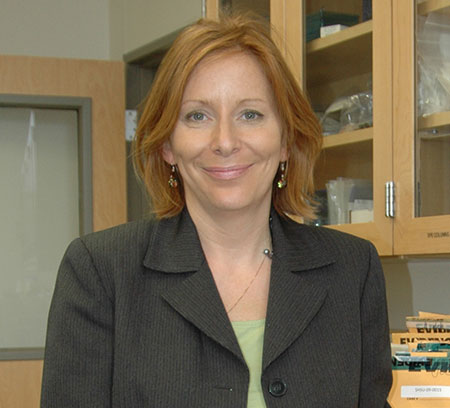Kerrigan Appointed To National Board For Forensic Standards
July 2, 2014
SHSU Media Contact: Beth Kuhles
 Sarah Kerrigan, chair of the department of forensic science at Sam Houston State University, was appointed to a new national organization dedicated to developing standards and guidelines for the forensic science community to improve the scientific basis of evidence used in courts.
Sarah Kerrigan, chair of the department of forensic science at Sam Houston State University, was appointed to a new national organization dedicated to developing standards and guidelines for the forensic science community to improve the scientific basis of evidence used in courts.
Kerrigan is one of 17 academic researchers and forensic science experts selected by the Department of Commerce’s National Institute of Standards and Technology and the U.S. Department of Justice to serve on the Forensic Science Standards Board.
By working with several resource and scientific committees, the board will develop and approve standards for various forensic disciplines, such as DNA, toxicology, medico-legal death investigation, facial identification, latent fingerprints, firearms and tool marks, and others. The standards will help improve the quality and consistency of forensic evidence and provide a uniform structure for forensic science disciplines.
"The appointments to the Forensic Science Standards Board essentially mark a transition from planning to doing," said NIST acting director Willie May. "After months of collaboration with the forensic science community, we are bringing to life this new organization that will have a positive impact on the practice of forensic science in the United States.”
Kerrigan has been a member of the faculty at Sam Houston State University since 2006 and has served on several state and national boards, including the Texas Forensic Science Commission and the National Science and Technology Council Subcommittee on Forensic Science, Accreditation and Certification Interagency Working Group.
Before joining SHSU, Kerrigan served as the director of the State Laboratory in New Mexico, where she was responsible for the blood and breath alcohol program, as well as forensic drug- and alcohol-related medical examiner and criminal casework, and the California Department of Justice Bureau of Forensic Services, where she worked as a forensic toxicologist and quality assurance manager. Originally trained at the Scotland Yard Laboratory in London, Kerrigan has been widely published in the field and has worked in a variety of private sector, academic, and government settings.
“It’s an honor and a privilege to be selected,” Kerrigan said. “There is a collective optimism among the forensic community to advance our discipline and there is no doubt that this new organization will have measurable impact.”
The new board has five members representing the research community, five members who serve as chairs of NIST’s Organization of Scientific Areas Committee, six members who represent national forensic science professional organizations, and one ex-official member, Mark Stolorow, director of OSAC affairs for NIST.
In February, NIST announced the formation of the Organization of Scientific Area Committees, a collaborative body of more than 600 forensic science practitioners and experts in government, academia and industry to assist in the development of consensus documentary standards and guidelines in forensic science. The committees, which report to the Forensic Science Standards Board, will study the research and measurement standards in each discipline to ensure there is a sufficient scientific basis for results.
These committees are charged with investigating five key areas, including biology/DNA; chemistry/instrumental analysis, crime scene/death investigations; information technology/multimedia; and physics/pattern. Other committees involved in the process include human factors, legal resource and quality infrastructure.
- END -
This page maintained by SHSU's Communications Office
Associate Director: Julia May
Manager: Jennifer Gauntt
Located in the 115 Administration Building
Telephone: 936.294.1836; Fax: 936.294.1834
Please send comments, corrections, news tips to Today@Sam.edu.

 SamWeb
SamWeb My Sam
My Sam E-mail
E-mail

